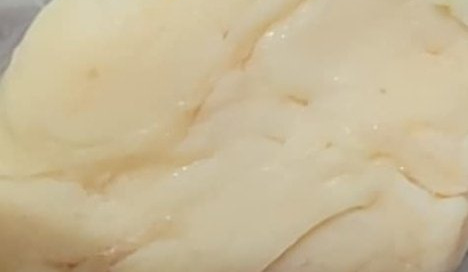Beef Tallow: Nature’s Forgotten Gold
Rediscovering the Versatility, Flavor, and Sustainability of This Timeless Ingredient
In an age dominated by processed oils and synthetic alternatives, it's time to shine a spotlight on a traditional staple that’s been quietly waiting in the wings: beef tallow. Revered by our ancestors for its versatility and nourishing properties, tallow is a treasure trove of benefits for the kitchen, the homestead, and even skincare.
Robert F. Kennedy Jr. recently cited beef tallow as a more natural, nutritious option, especially compared to widely used seed oils like canola and soybean oil.
As nature intended, every part of the animal can serve a purpose, and tallow is no exception. Whether you’re a culinary enthusiast seeking better flavor, a DIYer crafting natural skincare, or someone interested in sustainable living, beef tallow offers an ancient solution for modern needs. Let’s explore why this forgotten gold deserves pride of place in your kitchen.
Beef tallow is one of nature's most versatile and valuable products
What is Beef Tallow?
Beef tallow is the rendered fat from a cow, specifically from areas like the kidneys, around the loins, and other fatty tissues. Back in the day, before industrial oils and shortenings took over, tallow was a kitchen staple. It's got a high smoke point, making it ideal for frying, sautéing, and roasting. Its flavor is rich and savory, enhancing everything from meat to vegetables. And don’t let anyone tell you differently: properly rendered tallow is shelf-stable and can last for months without refrigeration.
How to Make Beef Tallow:
The process of rendering beef tallow is simple and can be done right at home.
Get the Right Fat: Start by trimming raw beef fat, preferably the suet from around the kidneys, as it’s the cleanest and highest quality.
Cut the Fat: Cut the fat into small pieces or grind it down. The smaller the pieces, the more efficient the rendering process.
Slow Heat: Place the fat in a heavy-bottomed pot or slow cooker. Apply low heat—slow and steady wins the race here. The fat will start melting and separating from any remaining bits of meat or tissue.
Render: As the fat melts down, you’ll notice solid pieces (known as cracklings) rising to the top. These can be skimmed off and saved for a crunchy snack, while the liquid fat underneath is your tallow.
Strain: Once the fat has fully melted, strain it through cheesecloth or a fine sieve to remove any remaining solids.
Cool & Store: Pour the strained tallow into jars or containers. As it cools, it will solidify into a white or pale-yellow substance. Store it in a cool, dark place, or refrigerate if you prefer.
Benefits of Beef Tallow:
Nutritional Value: Beef tallow is rich in fat-soluble vitamins A, D, E, and K. These vitamins support everything from bone health to immune function. Plus, tallow is made up primarily of healthy saturated and monounsaturated fats, which are great for energy.
High Smoke Point: With a smoke point around 400°F (204°C), tallow is perfect for high-heat cooking, such as frying and roasting. Unlike some industrial oils, tallow doesn’t break down and release harmful compounds when heated.
Natural & Sustainable: If you're raising cattle like I do, every part of the animal gets used, including the fat. It’s a traditional, sustainable product that supports regenerative farming practices.
Skin & Hair Care: This might surprise you, but tallow is an excellent moisturizer! It's close in composition to human skin oils, which makes it highly effective in nourishing and repairing dry or damaged skin. Some people even use it in homemade balms, lotions, and soaps.
Long Shelf Life: Properly rendered tallow can be stored at room temperature for months without going rancid. In the days before refrigeration, it was a key ingredient for preserving meats (think pemmican or confit).
Cost-Effective: Instead of buying expensive cooking oils, using beef tallow is a cost-effective way to maximize the value of your cattle. Plus, homemade tallow eliminates the need for processed oils and synthetic ingredients in skincare.
Multi Uses of Beef Tallow:
Cooking: Tallow makes for the perfect frying oil—crispy fries, fried chicken, or even homemade doughnuts. It imparts a subtle beefy flavor that elevates your dishes. Especially for those African Leafy Vegetables aka mboga za kienyeji
Roasting Vegetables: Toss your root veggies in tallow before roasting for a golden, crispy exterior and a deep flavor.
Homemade Soaps and Balms: Tallow is used in old-school soap making because it creates a hard, long-lasting bar with a creamy lather. Many people use it for balms to soothe dry skin, chapped lips, and even eczema.
Seasoning Cast Iron: Tallow is ideal for seasoning cast iron cookware, as it has a high smoke point and forms a durable non-stick surface.
Candlemaking: Yes, beef tallow can even be used for making candles, as it burns clean and steadily.
Beef tallow is one of the unsung heroes of the kitchen and homestead. Whether you’re cooking, crafting, or caring for your skin, this humble fat has a wide array of uses and benefits that deserve to be celebrated.
Good cooking fat is critical for optimizing nutrition especially if cooked meals comprise majority of the nutritional portfolio
A path to healing, health and renewal
Journey to Wellville: A Path to Health, Healing, and Renewal
As I reflect on my health journey, my heart is filled with deep gratitude for the meaningful relationships I've cultivated, especially through intentional collaboration. These connections have been a source of strength, especially during the height of the COVID pandemic in 2021, when I made a decision that changed my life. As life has a way of redirecti…







